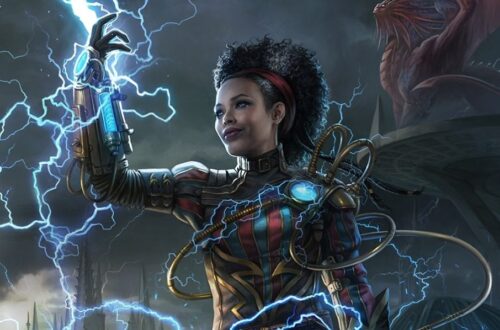Mythology Monday
The fifth edition of D&D has released the first of the three core books, the Players Handbook, to WPN retailers and the Gencon audience, with a full release to come tomorrow, 8/19. Picking this book up on Friday has really rekindled my interest in filling out my world, and I think putting it out here for suggestions and comments will be extremely helpful.
One of the things that I think is extremely important in a setting is the religion and belief system. Most fantasy systems are based on the High Middle Ages, vaguely around 1100-1300. This is the time of the Crusades, the rise of monsatic and knightly orders, and powerful popes. The common person had an entrenched belief system in the church, and heresies were popping up in urban centers, defining a new way of life. Kings and Lords held titles by the grace of God, and the peasants were in fear because of it.
This creates a world in which religion, if not central, is a major tenant of everyday life. This is easily replaced with hand waving and lip service in many fantasy worlds, but I wanted my religion to have a bit more bite. I wanted to see how a pagan system of beliefs would affect a fantasy world based, generally, on a single god. I also wanted to test the time honored tropes and ideas that most fantasy worlds build on, as it my normal bent.
I came up with a few basic groundrules years ago about what I wanted my religious system to be. I had had trouble before with a number of systems that supposedly support multiple gods and churches, and I also didn’t want the system to fade into the background of the game. I wanted each character and each player to be invested in their religion, and to create a but of drama around the religions themselves.
Groundrules
- The gods are distant, yet irrefutably real.
- All gods are genderless, shapeless and powerful beings. They do, however, have favored shapes, generally a male, a female and a War Form
- The gods are of an elemental family, and have a totem animal
- The gods have an enemy that is not themselves
- There will be clear, undeniable consequences for defying the gods
- There will be no possibility of Atheism
With these in place, I wanted to create a system with a set of gods that influence the mortal world, but were not strictly part of it. I wanted the feeling of the Church of the middle ages, but with out the modern influence of tolerance for Atheism. Not because I dislike atheists, but because I really wanted my gods to be a part of the world, instead of ignored.
I knew my gods, they’d been around for as long as I’d been DMing (some 18 years, now) I just needed now to add them to this system I’d built around them. I’d long ago given them a hierarchy.
The gods are:
Greater Elder gods
Nera -Wandering, Exploration, Water, Discovery, Spying
Conadral- Light, Day, Cold, Sky, Air
Evalrun -Trade, Wealth, Caves, Earth
Takanas -Strength, Fire, Battle, Inner Power, Determination
Major Elder gods
Marija -Nature, Grains, Beast, Plants
Telaxus – Murder, Sacrifice, Torture
Dagor – Death, Protection of the Dead, Dying, Destruction of the undead
Gestril -Lightning, Ice, Rain, Storms
Taralin – Vigilance, Life, Justice, Guardians
Lesser Elder gods
Decarin -Illusion, Magical power, Darkness
Oranna -Preparedness, Laws, Plans, Order
Hisea -Organization, Wealth, Royalty, Command
Greater Younger gods
Maltera -Disease, Recovery, Toughness
Lobos – Time, Death, Destruction, Inevitability
Major Younger gods
Kara -Deception, Luck, Trickery, Thieves
Farlorn -Learning, Knowledge, Books, Mages
Retren -Suffering, Spiders, Spite, Pain
Valeas – Personal Combat, Honor, Purity
Lesser Younger gods
Ariannas -Banditry, Violence, Bloodletting
Drakken – Mental Prowess, Psionics, Orphans,
I’ve organized them into families based on their elemental biases in addition to their Hierarchy. Within this framework, I needed to give them an enemy. Most fantasy worlds have their gods fighting between and among each other, but that isn’t really representative of most pagan belief systems. The Greek and Roman gods fought the Titans, the Norse fought the Giants. Shinto has no direct conflicting gods, and the Egyptian system was one keeping the harmony of Ma’at. I wanted my religion to draw on a combination of the Greco-Roman and the Norse. To that end I created the enemy, a section of gods called the Accursed. These have taken form rather recently in my head, so I don’t have as much information on them.
Adremach
Vremik
Tremad
Belsoril
Chremiss
Stelphin
Woan
Driim
Ostelorn
Kalboras
Faarinad
Hedima
Xe
Albronda
Licharin
Kolbass
Over the next few weeks and months, I want to take some time to delve deeper into what I’ve done, and to cement many of the details I’ve left up in the air until. Next week will be a look at the origin of the conflict between the Paltonarchs (the Gods of my world) and the Accursed, including the Creation Myth. The week after will take a look at the Cosmology and how they affect the world and the gods. Finally, three weeks from now I’m going to put out the first god for review and discussion. I am thereafter going to trade Paltonarch with Accursed until I get through and flesh them all out.
If anyone knows people who want to do concept sketches for the gods, their forms and their symbols, let me know. I just don’t have the talent to put them to paper.
